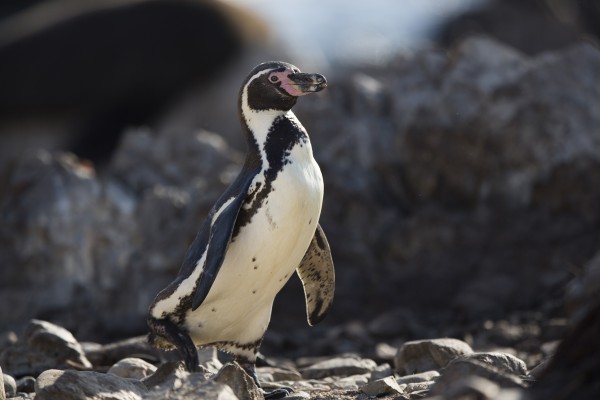Synopsis
Clouds and precipitation trapped by the Andean summits have now given way to complete deserts: the Nazca and Pisco Deserts – considered to be some of the driest places on Earth. In this dry and mineral universe where it never rains, Cyril is now joined by scientific journalist Emmanuelle Grundmann. Together, they discover an oasis that is home to one of the most amazing trees in the world: the huarango. On-site, British botanist Oliver Whaley supervises a conservation project to help preserve and protect this iconic Peruvian species. While exploring the region, Cyril also discovers that some huarango specimens can grow up to fifty meters high and act as a refuge to many birds as they offer shade and moisture that’s necessary for their survival. Nearing the end of their journey, Cyril and Emmanuelle finally reach the Pacific Coast and its steep cliffs. The cold Humboldt Current happens to be the source of an incredible biomass, including schools of anchovies which feed and allow the marine life there to develop. For Cyril, the Punta San Juan Reserve is the perfect place to visit and observe these shores, which are swarming with life. These coasts are prime nesting sites for a large number of birds but also for sea lions, seals, and penguins who live here by the thousands… and just a few hundred meters away from absolute desert! Once again, Cyril camouflages himself to better approach and closely photograph the behavior of these stunning marine animals. Our two explorers then meet with Patricia Majluf, former Peruvian Vice Minister of Fisheries, who tells our explorers that these large marine populations have significantly declined in recent years. This is due mostly by the phenomenon known as El Niño, a warm current that threatens the survival of the entire marine ecosystem. Now at the Punta San Juan Reserve, Patricia is campaigning for better protection of these marine species and hopes that the fishing and exploitation of guano will be better supervised. Moving on, Cyril and Emmanuelle embark for the Pescadores Islands, just north of Lima. Here, Cyril photographs the magnificent ballet of cormorants and bobbies that seek food out at sea everyday in order to feed their young. Cyril even takes the opportunity to use one of his incredible camera inventions: a telescopic pole mount that allows his camera equipment to approach the birds’ nests and even capture some females defending their young from predators. Finally, our explorers touch base with Franco-Peruvian biologist Sophie Bertrand and her scientific team to understand the threats on this gigantic community of birds – currently in breeding season. As they help the team carry out a scientific study, Cyril and Emmanuelle discover just how these scientists are studying the behavior and assessing the needs of these animals. The data collected here is crucial as it helps define the quotas for local fishing protocol, so that it does not infringe upon the needs of the unique marine life in this remarkable region.



